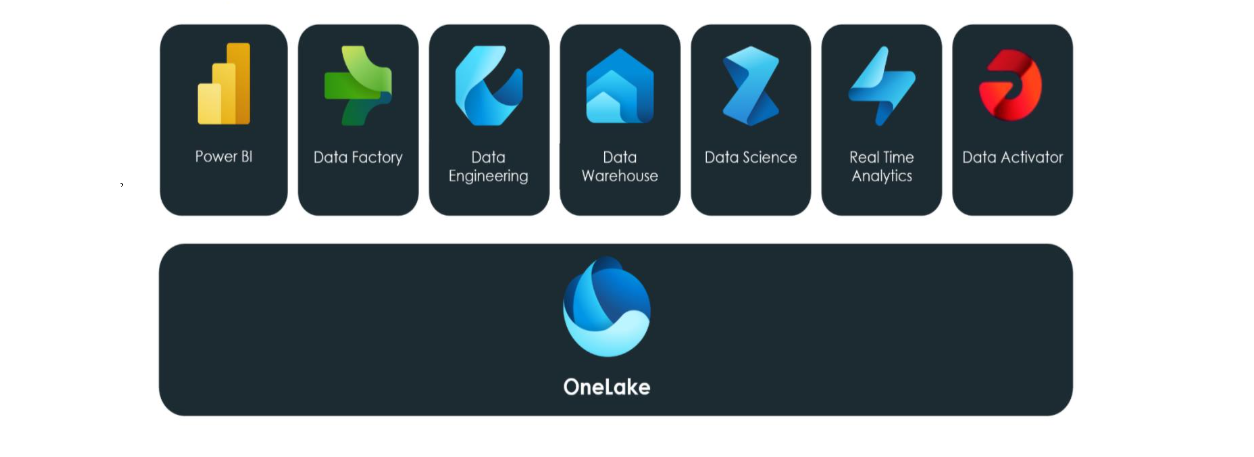Companies across various industries face the challenging task of optimizing their product mix to maximize profits, minimize costs, and meet customer demands. This complex decision-making process involves balancing multiple variables and constraints, making it an ideal candidate for mathematical optimization techniques. In this blog post, we’ll explore how CPLEX and mathematical optimization (also known as mathematical programming, decision optimization, or decision intelligence) can tackle product mix challenges in different industries.
Understanding Product Mix Optimization
Product mix optimization is the process of determining the ideal combination of products to produce or offer, given various constraints such as resource availability, production capacity, and market demand. This optimization problem is critical for businesses as it directly impacts profitability, resource utilization, and customer satisfaction.
The Power of CPLEX and Mathematical Optimization
IBM ILOG CPLEX Optimization Studio, commonly known as CPLEX, is a powerful tool for solving complex optimization problems. It uses advanced algorithms and mathematical models to find optimal solutions to linear, mixed-integer, and quadratic programming problems. When combined with mathematical optimization techniques, CPLEX becomes an invaluable asset for businesses looking to optimize their product mix.
Industry-Specific Challenges and Solutions
Manufacturing Industry
Manufacturers often struggle with optimizing their production schedules to meet demand while minimizing costs and maximizing resource utilization. They need to consider factors such as raw material availability, machine capacity, labor constraints, and inventory levels.
CPLEX and mathematical optimization can address these challenges by creating models that account for all relevant variables and constraints. For example, a linear programming model can be developed to determine the optimal production quantities for each product, considering factors like production costs, selling prices, and demand forecasts.
From a technical perspective, CPLEX’s mixed-integer programming capabilities allow for the incorporation of discrete decisions, such as whether to run a production line or not. This enables more realistic modeling of manufacturing processes.
On the business side, implementing CPLEX-based solutions can lead to significant improvements in operational efficiency. Manufacturers can expect reduced production costs, improved on-time delivery performance, and better inventory management.
The potential ROI for manufacturers implementing CPLEX and mathematical optimization can be substantial. Companies should experience cost savings of up to 15% and productivity increases of 20% or more after implementing optimized production schedules.
Retail Industry
Retailers face the challenge of determining the optimal mix of products to stock across multiple stores or channels. They need to consider factors such as shelf space, inventory holding costs, product profitability, and seasonal demand variations.
CPLEX and mathematical optimization can help retailers develop sophisticated assortment planning models. These models can incorporate historical sales data, promotional effects, and cross-product interactions to determine the ideal product mix for each store or channel.
Technically, CPLEX’s ability to handle large-scale optimization problems makes it well-suited for retail applications, where the number of products and stores can be in the thousands. Additionally, its support for quadratic programming allows for the modeling of complex relationships between products.
From a business perspective, optimized assortment planning can lead to increased sales, reduced inventory costs, and improved customer satisfaction. Retailers can make data-driven decisions about which products to stock, in what quantities, and where to place them.
The ROI potential in retail is significant. Retailers implementing CPLEX-based assortment optimization solutions have reported sales increases of up to 10% and inventory reductions of 20-30%, resulting in substantial profit improvements.
Financial Services Industry
Financial institutions face complex product mix challenges when designing investment portfolios, structuring financial products, or allocating assets. They need to balance risk and return while adhering to regulatory constraints and client preferences.
CPLEX and mathematical optimization can be used to develop sophisticated portfolio optimization models. These models can incorporate various risk measures, transaction costs, and market scenarios to determine the optimal allocation of assets.
From a technical standpoint, CPLEX’s support for quadratic programming is particularly valuable in finance, as many risk measures are quadratic in nature. Its ability to handle non-linear constraints also allows for more realistic modeling of financial markets.
On the business side, optimized portfolio management can lead to improved risk-adjusted returns, better compliance with regulations, and increased client satisfaction. Financial institutions can offer more tailored products and services to their clients based on optimized strategies.
The potential benefits for financial services firms are substantial. Institutions implementing CPLEX-based portfolio optimization solutions should see improvements in risk-adjusted returns of 1-2% annually, which can translate to millions of dollars for large portfolios.
Healthcare Industry
Healthcare providers face the challenge of optimizing their service mix to maximize patient outcomes while managing costs and resource constraints. This includes determining the optimal allocation of staff, equipment, and facilities across various medical services.
CPLEX and mathematical optimization can help healthcare providers develop models that balance patient needs, resource availability, and cost considerations. For example, an optimization model can be created to determine the optimal mix of medical procedures to offer, considering factors such as demand, profitability, and resource requirements.
Technically, CPLEX’s ability to handle mixed-integer programming problems is particularly useful in healthcare, where many decisions are discrete in nature (e.g., whether to open a new department or not). Its constraint programming capabilities also allow for the modeling of complex scheduling requirements.
From a business perspective, optimized service mix planning can lead to improved patient care, reduced wait times, and better resource utilization. Healthcare providers can make data-driven decisions about which services to offer and how to allocate their resources most effectively.
The ROI potential in healthcare is significant. Providers implementing CPLEX-based optimization solutions should experience improvements in resource utilization of up to 25% and reductions in patient wait times of 30-40%, leading to both cost savings and improved patient satisfaction.
Energy Industry
Energy companies face complex product mix challenges when deciding on the optimal mix of energy sources to use for power generation. They need to consider factors such as fuel costs, environmental regulations, demand fluctuations, and grid stability.
CPLEX and mathematical optimization can help energy companies develop sophisticated models for power generation planning. These models can incorporate renewable energy sources, storage systems, and demand response programs to determine the most cost-effective and environmentally friendly energy mix.
From a technical perspective, CPLEX’s ability to handle large-scale, non-linear optimization problems makes it well-suited for energy applications. Its support for stochastic programming also allows for the modeling of uncertainties in demand and renewable energy production.
On the business side, optimized energy mix planning can lead to reduced generation costs, improved compliance with environmental regulations, and increased grid stability. Energy companies can make data-driven decisions about investments in new generation capacity and the operation of existing plants.
The potential benefits for energy companies are substantial. Companies implementing CPLEX-based energy optimization solutions should see cost savings of 5-10% in power generation and improvements in renewable energy integration of up to 20%.
Need CPLEX Training? Enroll for
How Cresco International Can Help
As an IBM trusted partner and a consulting firm with expertise in decision optimization and CPLEX, Cresco International is uniquely positioned to help businesses across various industries tackle their product mix challenges. With years of experience in developing customized decision optimization solutions, Cresco International brings a wealth of knowledge and technical expertise to every project.
Cresco International’s solutions go beyond just technical implementation. They focus on delivering end-to-end solutions that integrate seamlessly with existing business processes and IT systems. This includes developing user-friendly interfaces, creating customized reports and dashboards, and providing training to ensure that clients can effectively use and maintain the optimization solution.
One of the key strengths of Cresco International is their ability to deliver measurable business value. They work with clients to establish clear KPIs and ROI metrics, and continuously monitor and refine the solution to ensure ongoing value creation. Their track record of successful implementations across various industries demonstrates their ability to deliver tangible results, whether it’s cost savings, revenue growth, or improved operational efficiency.
For businesses looking to gain a competitive edge through advanced analytics and optimization, partnering with Cresco International can be a game-changer. Their combination of technical expertise, industry knowledge, and focus on business value makes them an ideal partner for companies seeking to leverage the power of CPLEX and mathematical optimization to tackle their product mix challenges.
Want to Buy CPLEX? Visit
Conclusion
CPLEX and mathematical optimization offer powerful solutions
for tackling product mix challenges across various industries. From
manufacturing to retail, finance to healthcare, and energy, businesses can
leverage these tools to make data-driven decisions, optimize their operations,
and gain a competitive edge.
The technical capabilities of CPLEX, combined with
sophisticated mathematical optimization techniques, allow for the modeling of
complex business environments and the solving of large-scale optimization
problems. This enables businesses to find optimal solutions that balance
multiple objectives and constraints.
From a business perspective, the implementation of CPLEX and
mathematical optimization solutions can lead to significant improvements in
operational efficiency, cost reduction, and revenue growth. The potential ROI
is substantial, with many companies experiencing double-digit improvements in
key performance metrics.
As businesses continue to face increasing complexity and competition,
the ability to optimize product mix decisions will become even more critical.
By partnering with experienced consultants like Cresco International, companies
can leverage the power of CPLEX and mathematical optimization to transform
their decision-making processes and achieve sustainable competitive advantage.
In an era where data-driven decision-making is becoming the
norm, CPLEX and mathematical optimization stand out as essential tools for
businesses looking to thrive in the face of complex challenges. As we’ve seen
across various industries, the potential benefits are too significant to
ignore. Whether you’re a manufacturer looking to optimize production schedules,
a retailer aiming to improve assortment planning, or an energy company seeking
to optimize your power generation mix, CPLEX and mathematical optimization
offer a path to improved performance and profitability.











